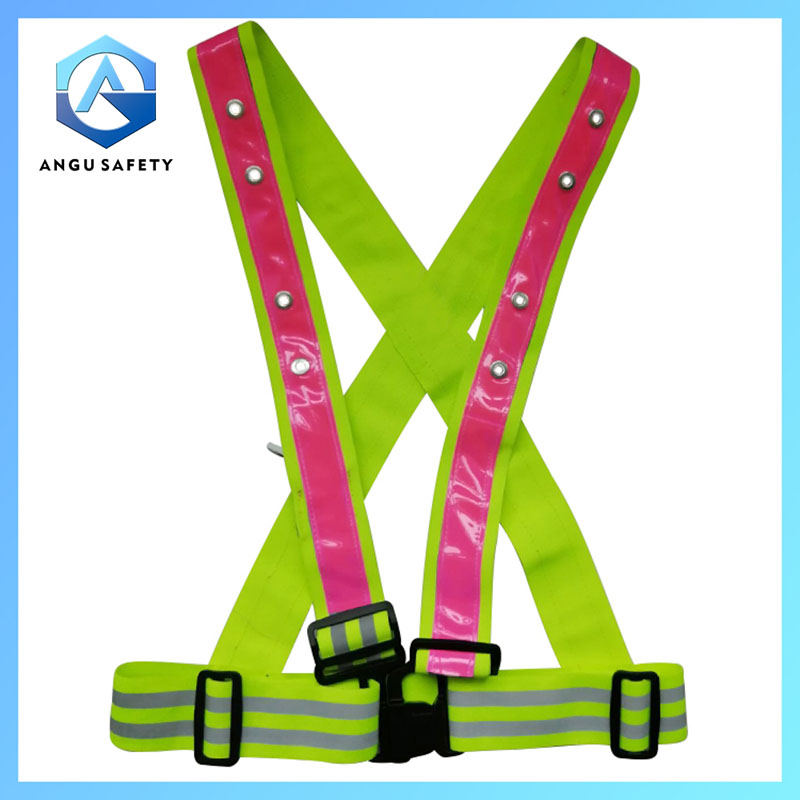Features of Safety Vests
2024-05-21
A safety vest, also known as a high-visibility vest, hi-vis vest, or reflective vest, is a piece of personal protective equipment (PPE) designed to enhance the visibility of the wearer in hazardous or low-light environments. Safety vests are typically worn by workers in construction, roadwork, transportation, emergency response, and other industries where visibility is crucial for safety. Here's an overview of safety vests, including their features, types, and uses:
Features of Safety Vests:
1. High-Visibility Material:
- Constructed from fluorescent fabrics in bright colors such as yellow, orange, or lime green, which are highly visible during daylight hours.
2. Reflective Tape:
- Enhanced with retroreflective materials or reflective tape strips that reflect light back to its source, making the wearer visible in low-light conditions or at night when illuminated by headlights or other light sources.
3. Breathable Fabric:
- Made from lightweight and breathable materials such as polyester mesh to provide comfort and ventilation, especially during hot or humid weather conditions.
4. Adjustable Fit:
- Equipped with adjustable straps, closures, or elastic sides to accommodate different body sizes and ensure a secure and comfortable fit for the wearer.
5. Pockets and Compartments:
- Some safety vests feature pockets or compartments for storing small tools, equipment, or personal belongings, providing convenience and accessibility for workers.
6. Compliance Standards:
- Comply with safety standards and regulations established by organizations such as the American National Standards Institute (ANSI) or the International Safety Equipment Association (ISEA), ensuring quality and performance.
Types of Safety Vests:
1. Class 1 Safety Vests:
- Suitable for low-risk environments with minimal traffic or machinery hazards, such as parking lot attendants or warehouse workers.
- Feature minimal reflective material and are typically worn in daylight conditions.
2. Class 2 Safety Vests:
- Designed for moderate-risk environments with higher traffic volumes or complex backgrounds, such as construction sites or roadway maintenance.
- Include more reflective material and a larger coverage area for improved visibility.
3. Class 3 Safety Vests:
- Intended for high-risk environments with fast-moving traffic, poor visibility conditions, or complex work tasks, such as highway construction or emergency response.
- Provide the highest level of visibility with the most reflective material and full coverage design, including sleeves.
4. Public Safety Vests:
- Specifically designed for law enforcement, firefighters, and emergency medical personnel, featuring additional features such as badge holders, radio loops, or utility pockets.
5. Specialized Safety Vests:
- Tailored for specific industries or applications, such as utility workers, surveyors, airport personnel, or railroad workers, with custom features or color-coding for identification.
Uses of Safety Vests:
1. Traffic Control:
- Worn by road construction workers, traffic controllers, and flaggers to direct traffic and ensure their visibility to motorists and equipment operators.
2. Construction and Maintenance:
- Used by construction workers, electricians, plumbers, and maintenance technicians working in areas with heavy machinery, equipment, or moving vehicles.
3. Emergency Response:
- Essential for firefighters, police officers, EMS personnel, and search and rescue teams operating in hazardous or low-light environments, improving their visibility to the public and fellow responders.
4. Outdoor Recreation:
- Worn by cyclists, runners, hikers, and outdoor enthusiasts during low-light conditions or in areas with limited visibility, enhancing their safety and visibility to others.
5. Industrial and Manufacturing:
- Employed by factory workers, warehouse staff, and assembly line workers to improve their visibility and safety in indoor or outdoor industrial environments.
Considerations When Choosing Safety Vests:
1. Visibility Requirements:
- Determine the level of visibility needed based on the work environment, traffic conditions, and lighting conditions to select the appropriate class of safety vest.
2. Fit and Comfort:
- Ensure the safety vest fits comfortably and securely without restricting movement or causing discomfort, considering factors such as size, adjustability, and breathability.
3. Compliance and Standards:
- Verify that the safety vest meets relevant safety standards and regulations for visibility, design, and performance, such as ANSI/ISEA 107 or EN ISO 20471.
4. Durability and Quality:
- Choose a safety vest made from durable materials and high-quality construction to withstand frequent use, washing, and exposure to harsh environmental conditions.
5. Additional Features:
- Consider additional features or customization options such as pockets, reflective tape configuration, or special designs tailored to specific job requirements or preferences.
6. Maintenance and Care:
- Follow manufacturer recommendations for proper care and maintenance of the safety vest, including cleaning instructions and replacement intervals for worn or damaged vests.
Conclusion:
Safety vests are essential personal protective equipment (PPE) designed to enhance the visibility and safety of workers in hazardous or low-light environments. By selecting the appropriate class and type of safety vest based on visibility requirements, work conditions, and industry standards, employers can ensure the safety and well-being of their workers. With features such as high-visibility materials, reflective tape, adjustable fit, and compliance with safety standards, safety vests play a crucial role in reducing the risk of accidents, injuries, and fatalities in various industries and applications.



